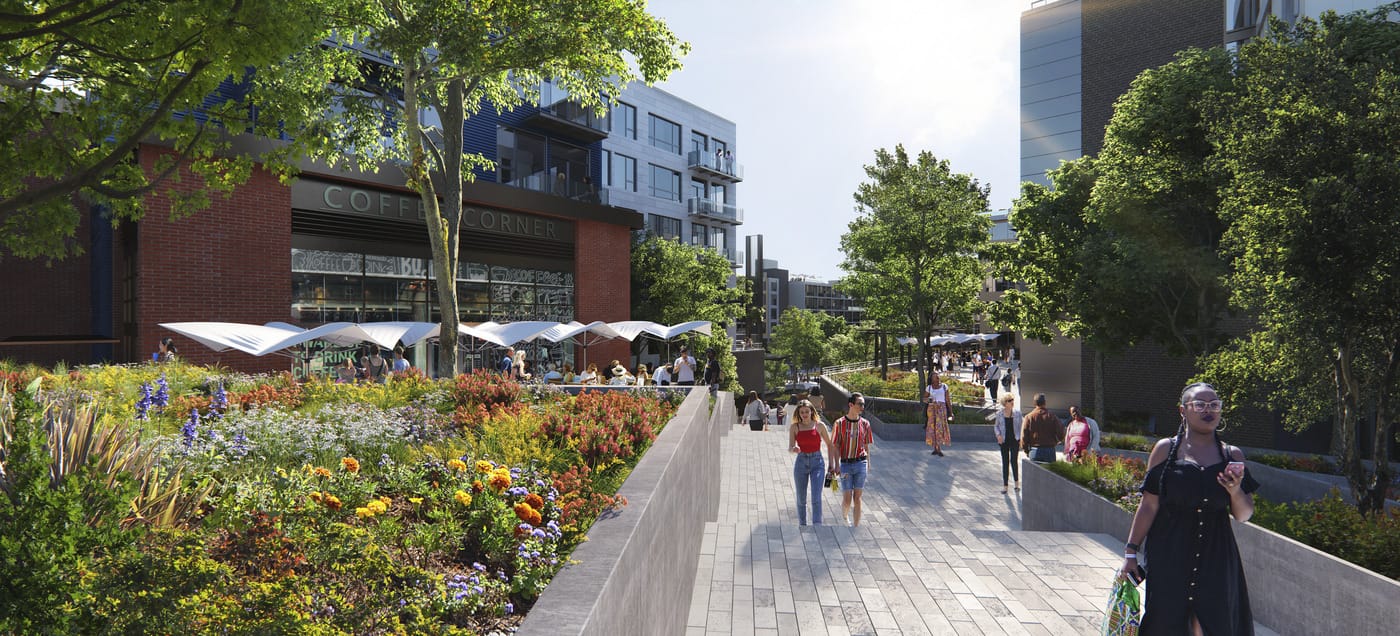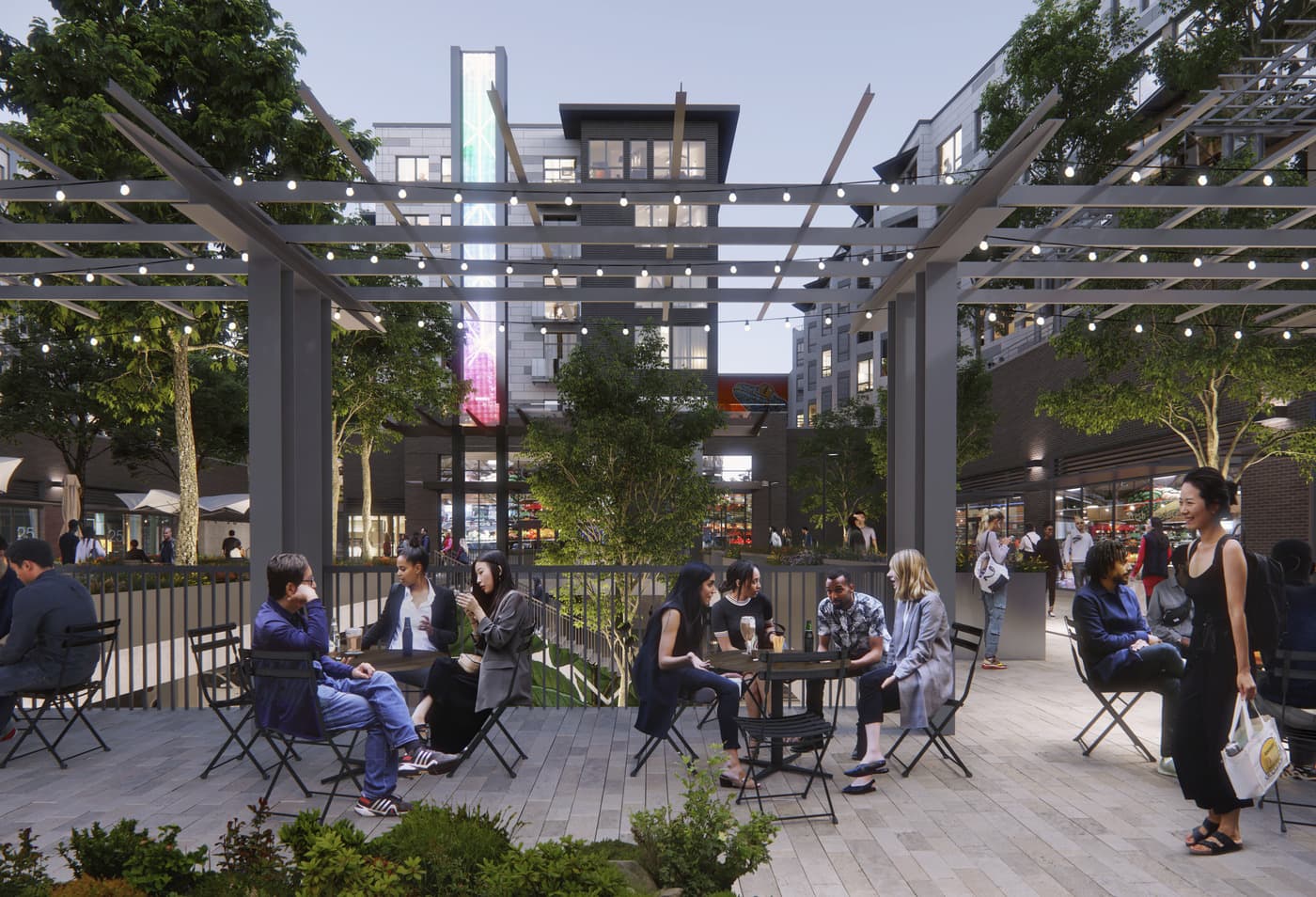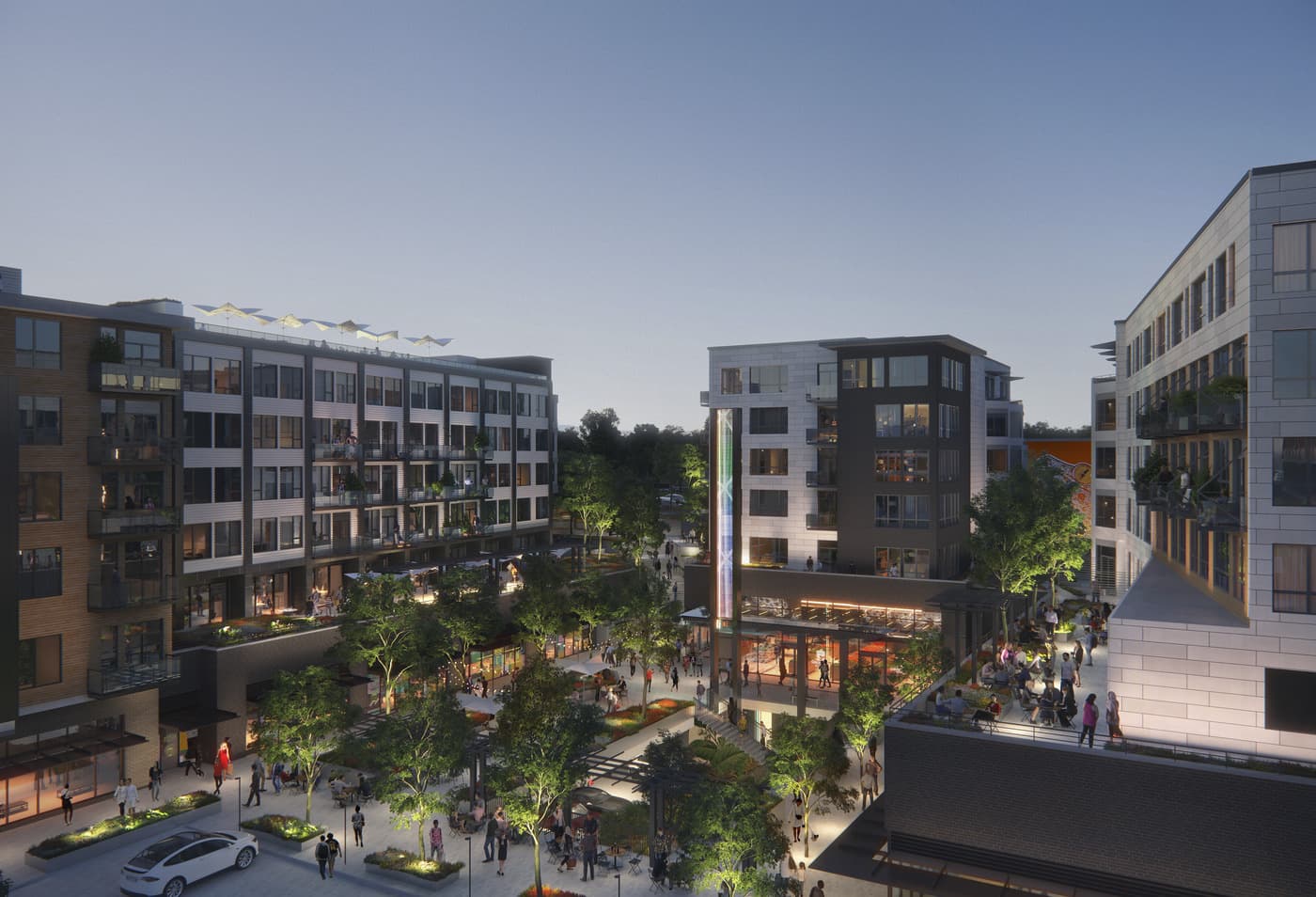观点
西雅图郊区商业街如何转型为健康社区
3 月 2022 / By 西雅图郊区商业街如何转型为健康社区

本文最初由以下机构制作并发表 比斯诺.
__________
有越来越多的人呼吁改变美国社区的设计方式,更加注重居民的福祉。这些新社区的核心在于:便捷通达。
有时被称为 15分钟城市, 这些社区的设计目标是,人们所需的一切生活必需品——从食品杂货到医疗服务——都能在步行或骑自行车15分钟内到达家。根据2019年一份题为“ 前方有行人 据 Smart Growth America 称,这些类型的步行开发项目可以提高社会流动性、促进经济增长,并改善居民生活的其他几个方面。
西雅图建筑、设计、战略和品牌公司的团队 MG2 他们坚信步行开发项目的潜力,因此他们专注于设计所谓的 健康社区.
MG2 负责人表示:“我们的重点超越了混合用途开发项目的传统‘生活-工作-娱乐’原则。” 本吉斯 说道。“我们还考虑到我们认为至关重要的‘滋养、运动和学习’原则。我们将整合我们在设计从杂货店到医疗诊所等各个方面的专业知识,打造一个具有凝聚力、适宜步行、健康的社区。”
吉斯特表示,对于 MG2 而言,健康社区的一些关键要素包括便捷的交通,包括便利的杂货店、日托中心、办公空间、医疗设施、公园和混合收入住房。过去几年,该公司一直致力于利用其建筑师在设计各种零售空间方面的丰富经验,将购物中心等未得到充分利用的零售场所改造成充满活力的社区。

其最新项目之一位于华盛顿州柯克兰,西雅图以东的郊区。MG2 及其合作伙伴 麦迪逊发展集团 已将前购物中心的旧址重新设计成一个占地 135 万平方英尺的开发项目,名为 玫瑰山这个新社区紧邻405公路,将包含四栋混合用途的公寓/零售建筑。每栋建筑的设计都充分考虑了不同的人群,内外都散发着独特的个性,但又不失相同的设计语言。
这些建筑除了拥有800多套公寓单元外,还将配备零售设施,包括医疗保健设施和日托中心。此外,还将设有办公空间、户外派对平台以及其他一些向所有居民开放的便利设施。
“我们在整个项目中分布了各种便利设施,吸引居民探索和了解他们居住地以外的建筑,”吉斯特说。“我们努力在整个场地营造一种社区感、好奇心和活力。”
小区内,居民可以找到一家4万平方英尺的全方位服务杂货店,以及一家位于小区对面的Costco超市。这尤其合适,因为 MG2 已在全球设计了数百家 Costco为了进一步打造步行社区,谷歌于 11 月敲定了附近 Lee Johnson 汽车经销店的购买协议,计划利用该地块设立新的实体办公室,扩大其在西雅图的业务范围。

吉斯特表示,在此之前,大多数美国社区的设计都以车辆为中心。相比之下,玫瑰山社区则专注于打造通行便利、光线充足、景观优美的步行道,方便居民轻松步行前往社区内的任何建筑。就连主停车场也种植了绿植,并通过类似天窗的开口引入自然采光,引导居民和访客直接进入杂货店入口。
该开发项目预计将于今年春天开工。
“玫瑰山 “它不仅仅面向那些距离其建筑步行15分钟以内的居民,”吉斯特说道。MG2 的愿景是成为整个柯克兰社区的中心,目前该社区主要由商业街、停车场、低层建筑和独户住宅社区组成。
他补充说,零售业的本质正在发生变化,改变了美国各地购物中心的模式。传统的主力店和小型商店已无法满足消费者当前的需求,并加速了全国各地购物中心的关闭。
“正因如此,我们才采取了全新的零售开发方式,首先要思考‘零售如何才能覆盖整个社区,而不仅仅是零售机会?’”他说道,“这有效地将我们从开发‘购物场所’转变为设计令人向往、宾至如归的目的地。”
联系 Ben Gist 了解更多信息 玫瑰山 以及健康社区设计背后的团队。